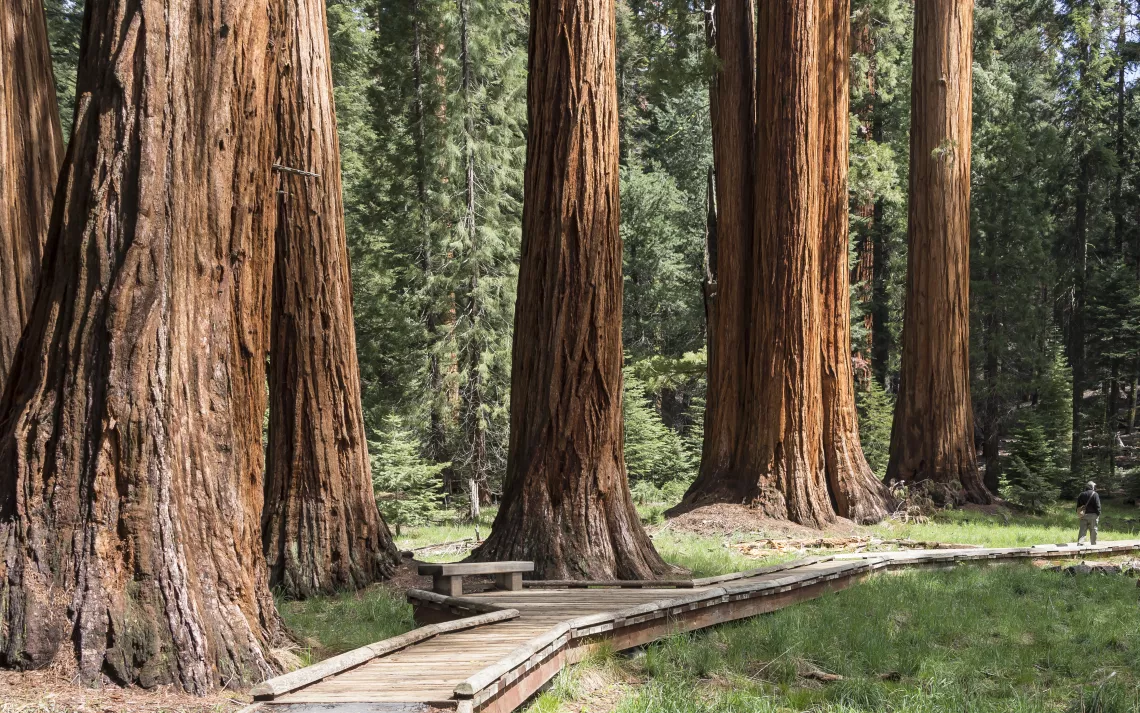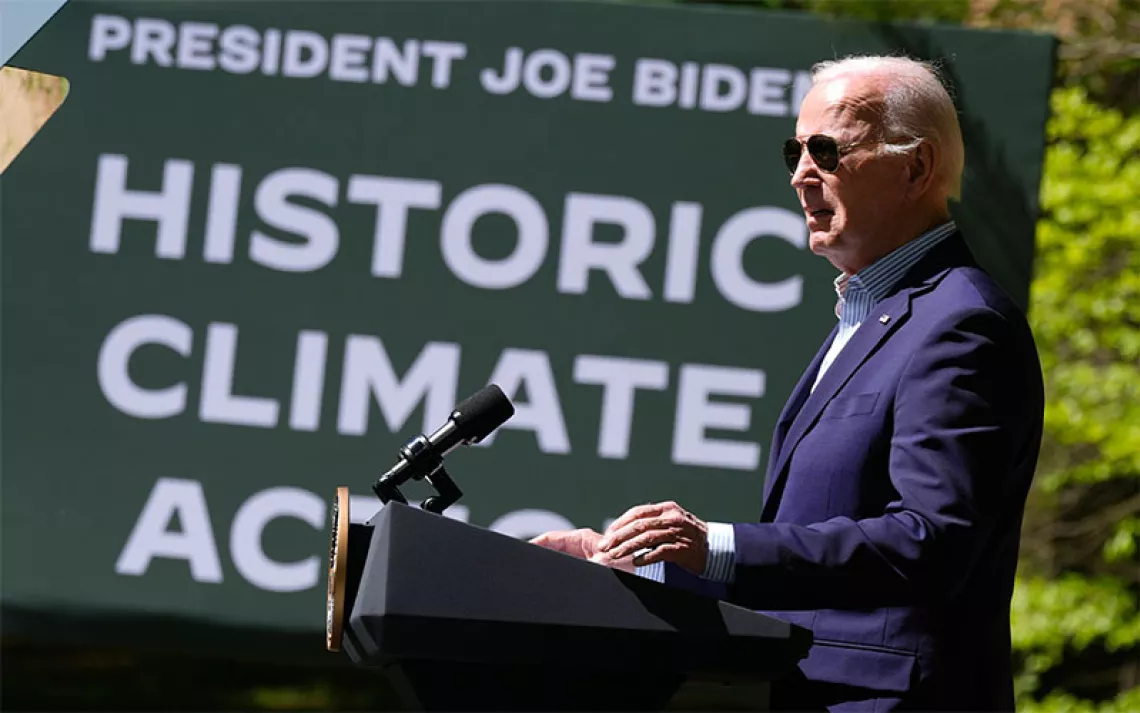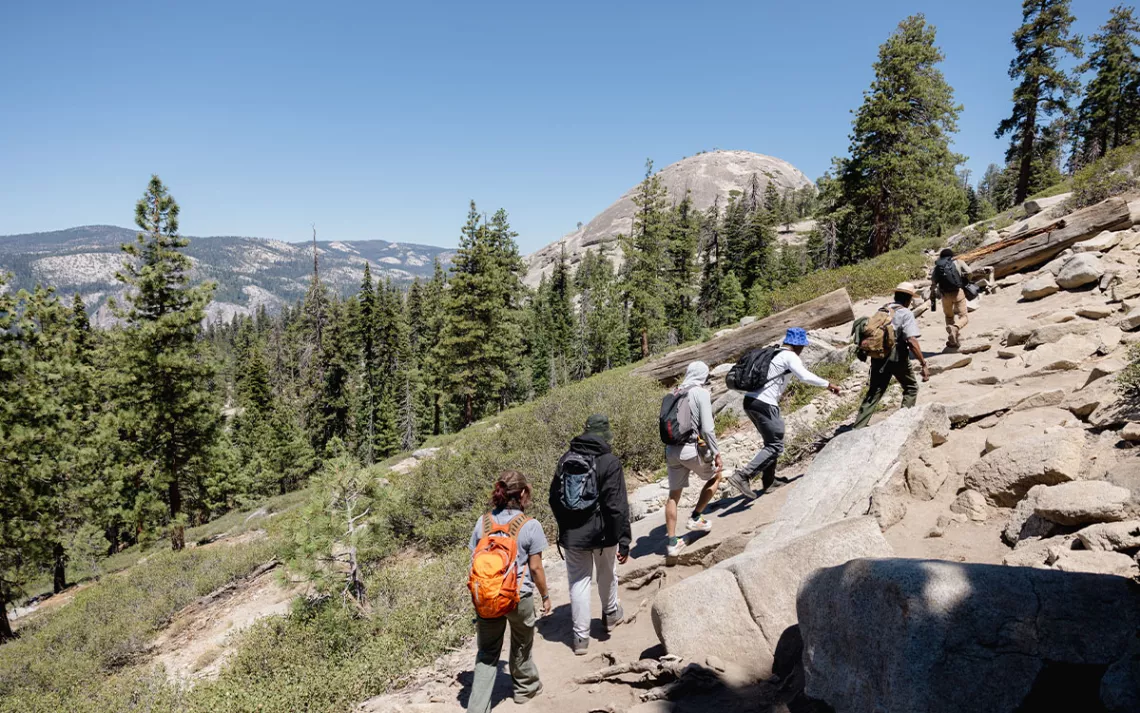Wildlands Report Card: Giant Sequoia National Monument
The effort to preserve California's Sierra Nevada won a major victory

In March 1999, the Sierra Club set an ambitious agenda: protect 100 million acres from development and resource exploitation by 2003. The wild places we hope to preserve include six national treasures, from the Everglades to the Arctic, and 52 local oases cherished by the people who hike, swim, camp, and play in them.
Now halfway through, the campaign has made significant progress in almost half of these places. The effort to preserve California's Sierra Nevada won a major victory in April 2000 when President Clinton designated the 328,000-acre Giant Sequoia National Monument, and another in January 2001 when the U.S. Forest Service released a management plan that emphasizes environmental protection.
A second federal plan enacted in January will protect 58 million acres of roadless areas in national forests, including 14.7 million acres of Alaska's Chugach and Tongass National Forests, 235,000 acres of New Hampshire's White Mountain National Forest, and 62,000 acres of Minnesota's Superior National Forest. Forests in the Northern Rockies are also big winners, with 19 million roadless acres protected in Montana, Idaho, and Wyoming. In its final days, the Clinton administration also shot down plans for a commercial airport just outside Everglades National Park.
Unfortunately, the Arctic National Wildlife Refuge and many other places now face devastating development under the industry-friendly Bush administration. But activists can draw strength for the battles ahead from the local victories detailed in the following cross-country tour, which shows what's possible when people stand up to developers, timber companies, and mining interests to defend the places they love.
WASHINGTON- President Clinton created the 200,000-acre Hanford Reach National Monument last June to spare this 51-mile undammed stretch of the Columbia River and its wild salmon from proposed agricultural operations and other threats.
OREGON- Congress passed legislation protecting the high-desert ecosystem of Steens Mountain-Alvord Basin in 175,000 acres will become wilderness.
IDAHO- Activists won two victories in 1999, defeating a proposed hog factory at the edge of the rugged Owyhee Canyonlands and negotiating a final settlement with the U.S. Air Force that reduced the size and impact of its bombing range there.
UTAH- In January 1999, the EPA declared that it would veto any highway project across the Great Salt Lake wetlands. Unfortunately, the agency reneged on this promise after the 2000 election, allowing plans for the sprawl-promoting Legacy Parkway to proceed.
ARIZONA- An agreement brokered in August 2000 between the federal government and Tufflite Incorporated ensures that the San Francisco Peaks, a site sacred to many tribes, will no longer be ravaged by mining. Tufflite agreed to close its White Vulcan Mine within six months and restore the site within five years.
NEW MEXICO- As a result of public outcry, Speerex Incorporated was forced to sell its lease back to the Bureau of Land Management in January 2000, protecting the Bisti/De-Na-Zin Wilderness from oil and gas drilling.
COLORADO- Last year, the BLM determined that almost 80,000 acres of the Vermillion Basin have "wilderness characteristics." Activists hope the finding will lead to a congressional wilderness designation for these colorful, petroglyph-covered canyons.
MISSOURI- In late 1999 Congress passed a moratorium on new mining permits until the U.S. Geological Survey studies the impact of mining on the Eleven Point River, Jack's Fork River, and Current River watersheds.
WISCONSIN- After dumping more than 250,000 pounds of toxic polychlorinated biphenals (PCBs) in the Fox River, paper companies finally had to pay: Last November, the Sierra Club's campaign culminated in a successful industry-funded cleanup of one of the river's most polluted hotspots.
MICHIGAN- A plan to build 350 luxury homes and a golf course in the heart of Humbug Marsh would have devastated the 400 acres of wooded wetlands, but activists fought back, and the U.S. Army Corps of Engineers denied the developer a permit in September 1999.
TENNESSEE- The Forest Service recently halted 10 timber sales in Cherokee National Forest, as well as 46 sales in 11 other national forests.
FLORIDA- In August 1999, the Southwest Florida Water Management District agreed to buy an 87-acre parcel of Clam Bayou. The peaceful area will be preserved as parkland, saving it from sprawl.
VIRGINIA- Environmental activists united with the Mattaponi tribe to fight a proposed reservoir that would destroy more than 400 acres of forested wetlands, along with the tribe's Mattaponi River fishery. The effort paid off: In June 1999, the Army Corps unexpectedly recommended denial of the necessary permit.
WASHINGTON, D.C.- When the Corrections Corporation of America tried to build a prison on Oxon Cove, activists rallied to save their tranquil shoreline. In June 1999, the zoning commission unanimously decided that a prison would be an inappropriate use of waterfront property.
NEW JERSEY- Activist efforts helped add 1,000 acres to Sterling Forest, part of the densely wooded greenbelt known as the Highlands.
NEW YORK- After studying the problem of PCB contamination in the Hudson River for ten years, last December the EPA recommended a $460 million cleanup, to be paid for by polluter General Electric.
MASSACHUSETTS- In October 1999, Governor Paul Cellucci took 15,000 acres of the Massachusetts Military Reservation away from the military, whose activities had polluted the aquifer there, and gave it to state environmental officials to protect its pine barrens and water resources.
VERMONT- The Sierra Club helped stop a 1998 Forest Service proposal to commercially log Lamb Brook Roadless Area, a pristine part of Green Mountain National Forest.
 The Magazine of The Sierra Club
The Magazine of The Sierra Club



